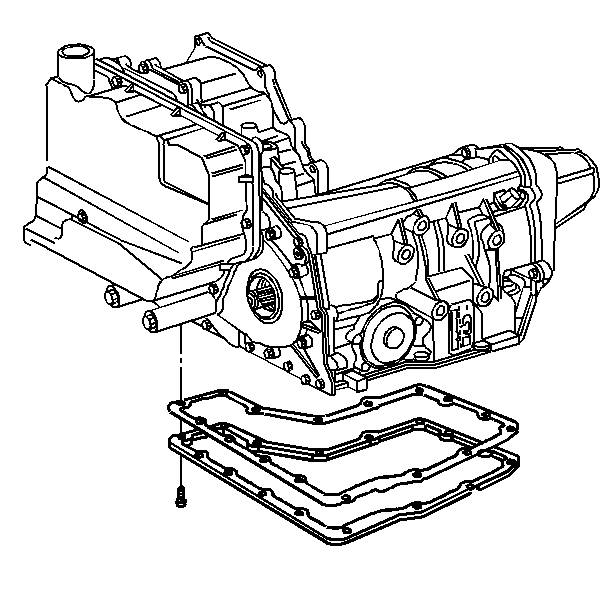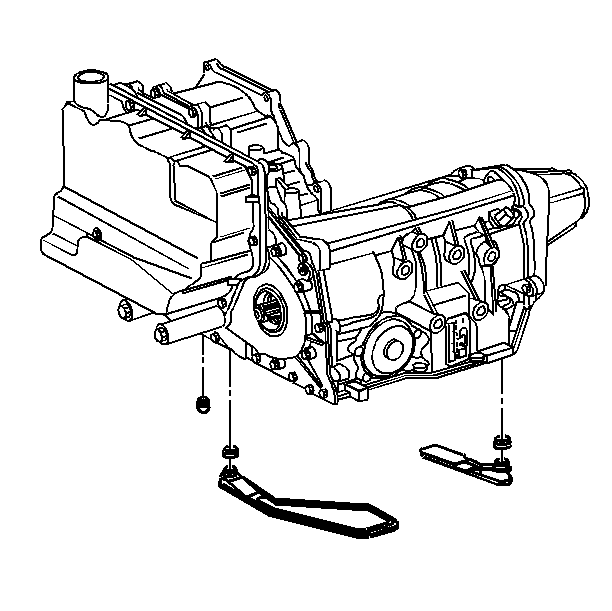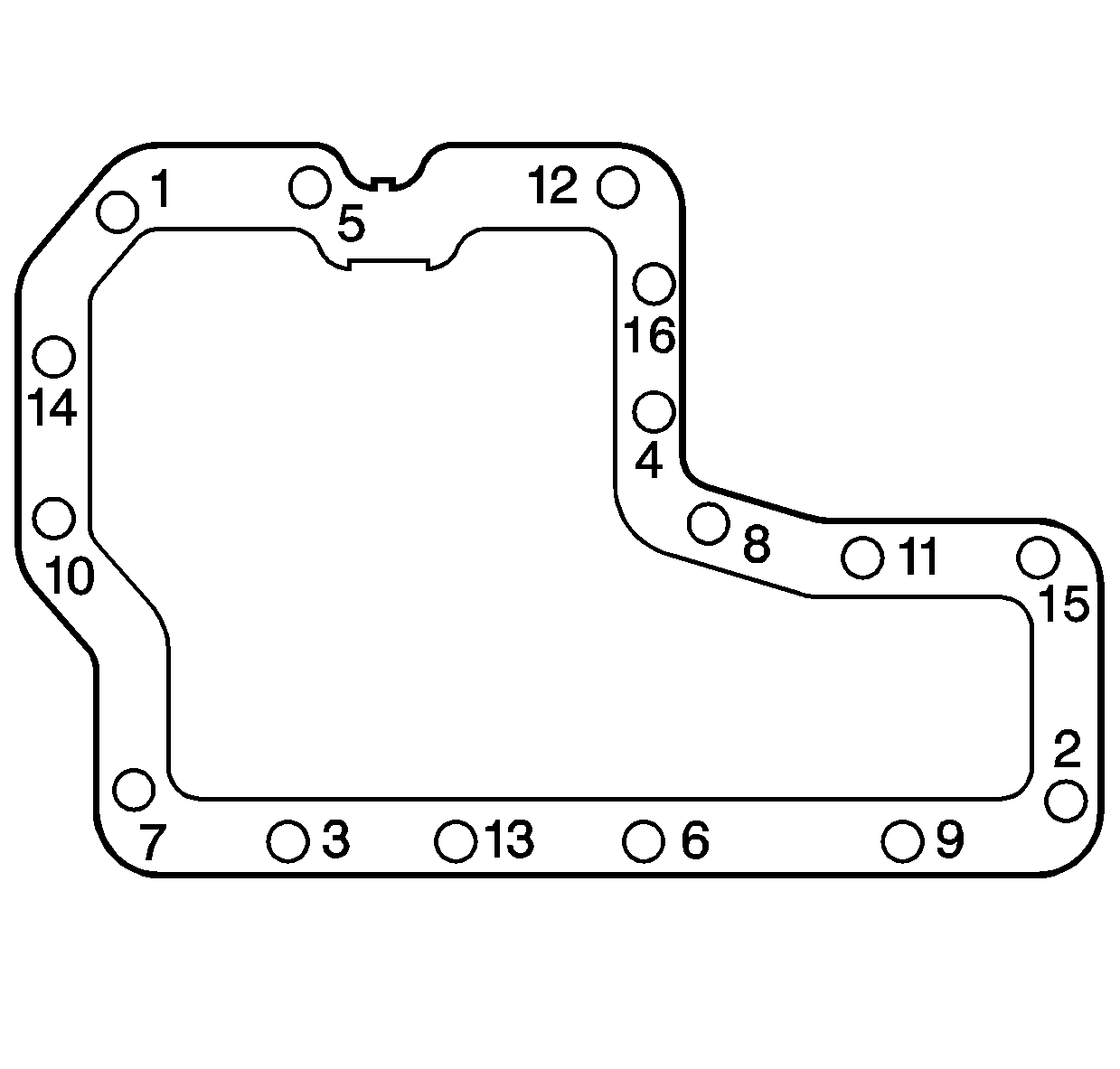Removal Procedure
The HYDRA-MATIC 4T80-80 transmission has a filter under the side cover that requires service only during transmission overhaul. Scavenging screens are beneath the bottom pan, which you must replace when you change the transmission fluid.
- Raise the vehicle and support. Refer to Lifting and Jacking the Vehicle in General Information.
- Place a drain pan under the transmission bottom pan in order to catch the fluid.
- Loosen the bottom pan bolts. Drain any fluid in the pan.
- Remove the drain plug in the transmission case.
- Remove the bottom pan, the transmission case bolts, and the seal.
- Remove the left and the right scavenger screens.
- Inspect the following parts for the conditions cited:
Important: Removing the bottom pan on the HYDRA-MATIC 4T80-E only partially drains the transmission fluid. The remaining fluid is held in the in the side cover and the torque converter. Removing the drain plug in the case after removal of the bottom pan will drain fluid from the side cover. You do not need to drain the torque converter during most service procedures.


Important: The bottom pan seal is NOT reusable. Replace the pan seal with a new part after removing the pan for any service.
| • | The scavenger screen lip seals in the transmission case for nicks or cuts. If damaged, replace. |
| • | The bottom pan and the transmission case for dents or nicks in the sealing surfaces. If damaged, replace. |
| • | The bolts for damaged threads. If damaged, replace. |
| • | For proper sealing, the bottom pan and the case sealing surfaces must be clean and dry. In order to maintain proper bolt torque, the bolts and the tapped holes in the case must be clean and dry. |
Installation Procedure
- Install the drain plug in the transmission case.
- Install new left and right scavenger screens.
- Install the bottom pan and a new seal. Finger tighten the bolts.
- Tighten each of the 16 bolts 3 times in the sequence shown. Refer to
Notice: Use the correct fastener in the correct location. Replacement fasteners must be the correct part number for that application. Fasteners requiring replacement or fasteners requiring the use of thread locking compound or sealant are identified in the service procedure. Do not use paints, lubricants, or corrosion inhibitors on fasteners or fastener joint surfaces unless specified. These coatings affect fastener torque and joint clamping force and may damage the fastener. Use the correct tightening sequence and specifications when installing fasteners in order to avoid damage to parts and systems.
- Tighten the pan bolts to 3 N·m (27 lb in).
- Tighten the pan bolts to 6 N·m (53 lb in).
- Tighten the pan bolts to 12 N·m (106 lb in).
- Lower the vehicle.
- Add DEXRON-III transmission fluid as required. Refer to Transmission Fluid Check and to Fluid Capacity Specifications .
- Reset the transmission adapts. Refer to Electronic Component Description .
- Reset the transmission oil life indicator. Refer to Electronic Component Description .


Notice: Use the correct fastener in the correct location. Replacement fasteners must be the correct part number for that application. Fasteners requiring replacement or fasteners requiring the use of thread locking compound or sealant are identified in the service procedure. Do not use paints, lubricants, or corrosion inhibitors on fasteners or fastener joint surfaces unless specified. These coatings affect fastener torque and joint clamping force and may damage the fastener. Use the correct tightening sequence and specifications when installing fasteners in order to avoid damage to parts and systems.

Tighten
